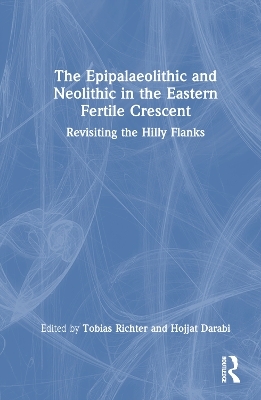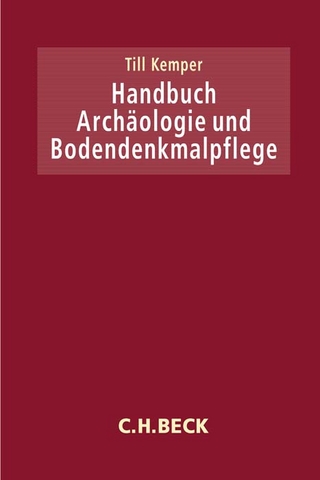
The Epipalaeolithic and Neolithic in the Eastern Fertile Crescent
Routledge (Verlag)
978-1-032-37142-9 (ISBN)
This volume brings together the latest results and discussions from research carried out in the eastern Fertile Crescent, the so-called hilly flanks, and adjacent regions, as well as providing key historical perspectives on earlier fieldwork in the region.
The emergence of sedentary food producing societies in southwest Asia ca. 10,000 years ago has been a key research focus for archaeologists since the 1930s. This book provides a balance to the weight of work undertaken in the western Fertile Crescent, namely the Levant and southern Anatolia. This preference has led to a heavy emphasis on these regions in discussions about where, when and how the transition from hunting and gathering to plant cultivation and animal domestication occurred. Chapters assess the role of the eastern Fertile Crescent as a key region in the Neolithization process in southwest Asia, highlighting the key and important contributions people in this region made to the emergence of sedentary farming societies.
This book is primarily aimed at academics researching the transition from hunting and gathering to agriculture in southwest Asia. It will also be of interest to archaeologists working on this transition in other parts of Eurasia.
Tobias Richter is an associate professor in Near Eastern Archaeology and head of the Centre for the Study of Early Agricultural Societies (CSEAS) at the University of Copenhagen, Denmark. His work investigates the transition from hunting and gathering to agriculture in prehistory, focusing on Southwest Asia. Hojjat Darabi is an associate professor of prehistoric archaeology at Razi University, Kermanshah, Iran. For the past 15 years, he has been researching the Neolithic in the Zagros, focusing on the transition from foraging to food producing and the emergence of village life. He (co)-directed excavation at a number of important Neolithic sites in the central Zagros.
Part 1 General Perspectives 1. Revisiting the Hilly Flanks of Iran: New Data and Shifting Paradigms 2. Emergence and Dispersal of Neolithic Lifeways: From Core to Peripheries 3. From Cradle to Mosaic: The Metaphors We Live By 4. Human Dimensions of the Transition from Hunting-Gathering to Agro-Pastoralism Part 2 New Fieldwork/Regional Perspectives 5. Epipalaeolithic Campsite at the Bawa Yawan Rockshelter, Nawdarwan Valley, Kermanshah Region, West-Central Zagros Mountains 6. Environment and Subsistence in the Zagros Epipalaeolithic: New Insights from Palegawra Cave 7. The TCEC Project and its Implications for Investigating Neolithisation of the Eastern Fertile Crescent 8 Körtik Tepe in the Origin and Development of the Neolithic in Upper Mesopotamia Part 3 Lithic Industries 9. The Earliest Neolithic Lithic Traditions: Evidence from Chogha Golan in the Western Foothills of the Zagros Mountains, Iran 10. Multiperiod Chipped Stone Assemblages: Preliminary Report on Caves and Rock Shelters in Izeh Plain, Khuzestan, Iran 11. Aceramic Neolithic Flaked Stone Assemblages from Trench III, East Chia Sabz, West Iran Part 4 Ceramics 12. Fars as a Multi-Cultural Zone during the Neolithic Period 13. Tell Begum, Shaikh Marif and Shakar Tepe: The Late Neolithic Pottery in the Shahrizor Plain, Iraqi Kurdistan 1 4. The Dung Among Other Tempers in Zagros and Mesopotamia Neolithic Pottery Part 5 Miscellaneous 15. Ganj Dareh Burial Practice and Social Memory 16. ‘DomestiSensation’: Current State of Plant Analyses in Göbekli Tepe, Southeast Turkey 17. Testing the Palaeolithic Harvesting Hypothesis at Ghar-E Boof with Improved Botanical Recovery
| Erscheinungsdatum | 05.12.2023 |
|---|---|
| Zusatzinfo | 8 Tables, black and white; 19 Line drawings, black and white; 96 Halftones, black and white; 115 Illustrations, black and white |
| Verlagsort | London |
| Sprache | englisch |
| Maße | 156 x 234 mm |
| Gewicht | 898 g |
| Themenwelt | Geisteswissenschaften ► Archäologie |
| Geisteswissenschaften ► Geschichte | |
| ISBN-10 | 1-032-37142-0 / 1032371420 |
| ISBN-13 | 978-1-032-37142-9 / 9781032371429 |
| Zustand | Neuware |
| Informationen gemäß Produktsicherheitsverordnung (GPSR) | |
| Haben Sie eine Frage zum Produkt? |
aus dem Bereich


